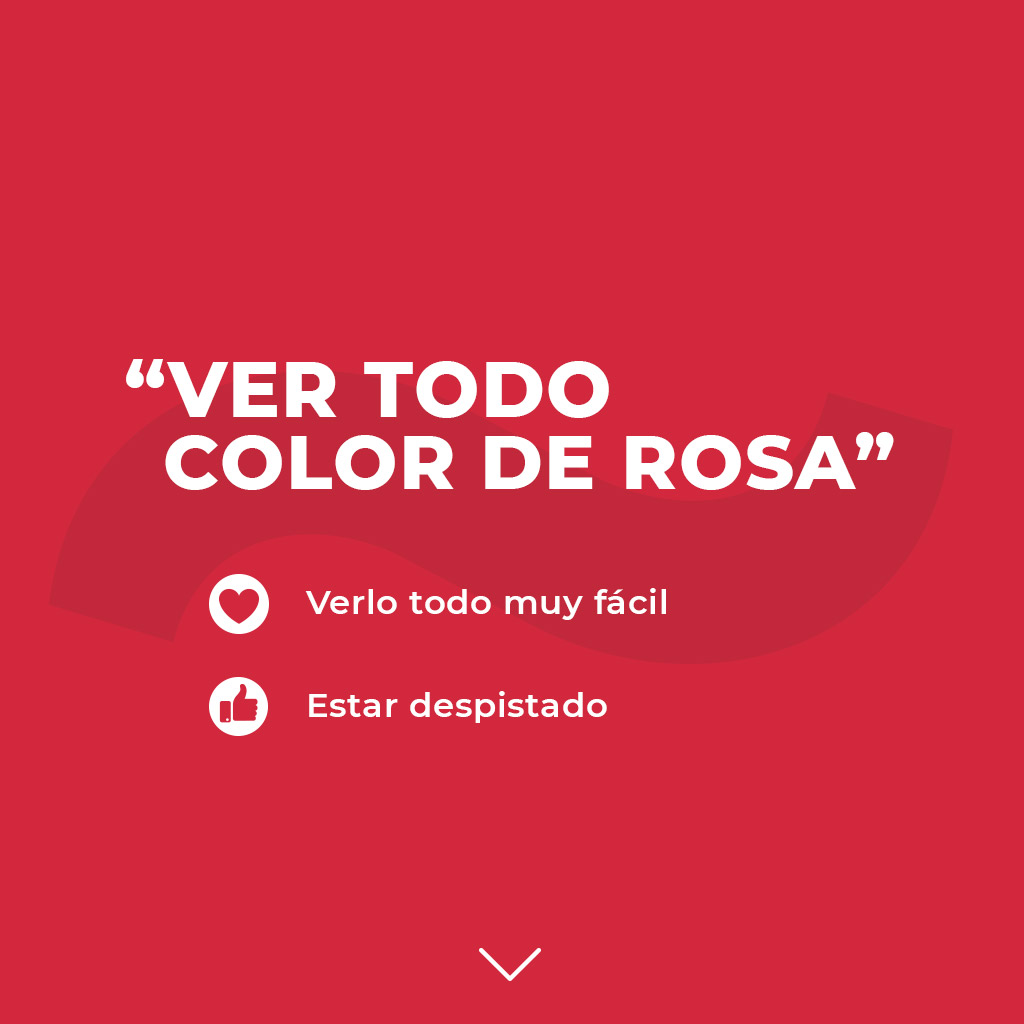Let's talk! Browse our offer and let us help you create your own budget.
Does the world look pink to you?
In Spanish culture, the color pink is mostly associated with two ideas: on one hand, it’s linked to optimism and positive or pleasant things; on the other, as in many Western countries, pink is associated with girls and, by extension, women, and the products designed especially for them.
Once you know this, you probably won’t have a hard time understanding why we say that someone ve todo de color rosa (sees everything pink) when we’re talking about a person who’s usually optimistic… oftentimes excessively or unjustifiably so. In contrast to the hardened pessimist, who sees everything black (ve todo negro), someone who sees everything pink has such an optimistic outlook on life that sometimes they seem a bit naïve or detached from reality.
Of course, you don’t have be the type of person who always looks on the bright side to say ves todo de color rosa: we also use this saying in specific situations that fill us with joy and good feelings about the future. For example, it’s common for everything to look pink when we fall in love or when we have something good on the horizon, like a trip we’re excited about or a new job. It’s when you feel like everything is going to turn out well even before it happens.

So what is the prensa rosa (pink press) all about? Do you think celebrity news is pink because it covers only happy events? In this case, the color pink comes from the second association we talked about: topics and products aimed at women. Despite the fact that in Spain, as in the rest of the world, men are increasingly willing to admit to flipping through prensa rosa or watching programas de corazón (TV shows that cover celebrity news or gossip), and more and more women do not identify with this type of media, the names haven’t changed because when they started, articles and shows about the rich and famous were made to entertain women.
The prensa rosa dates back to the mid-19th century, when the crónica de salones, as it was known then, began to find its way into newspapers and magazines. These articles were aimed especially at women, who were assumed to have no interest in politics or current events, and focused on the gatherings and celebrations of the aristocracy. However, they also attracted male readers because of their tendency to included veiled criticism: like today, the prensa rosa of the era also tended to poner verdes (talk badly about) certain people, with varying levels of discretion. And, as is true in many countries, in Spain sometimes it is that side (as opposed to the “pink” side) of things that readers find most entertaining.
Do you like learning new expressions? We recommend that you watch this video to see us explain different Spanish expressions with colors. You’ll learn something new, and you’ll see how your expectations about learning Spanish will start looking pink in no time!
